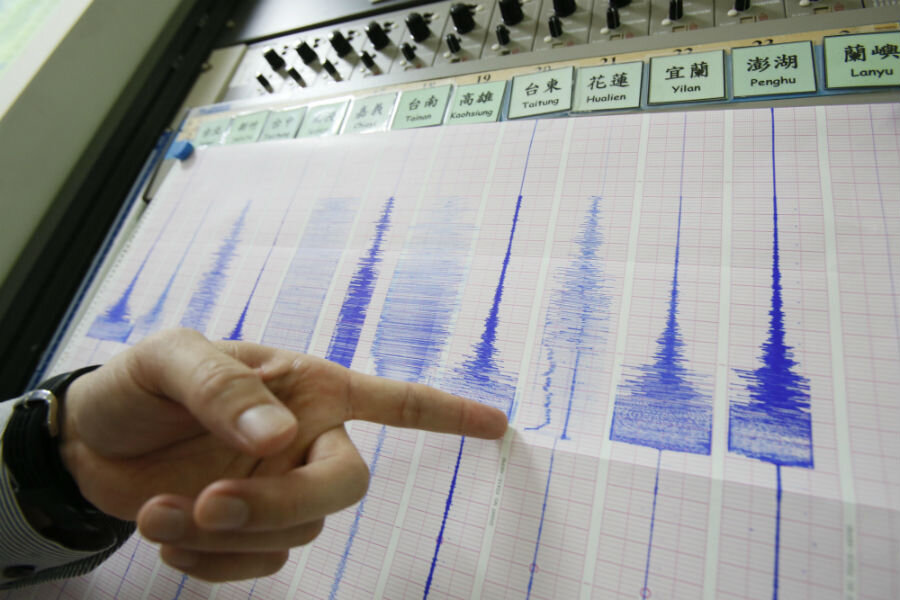Stanford team builds 'Shazam' for earthquakes
Loading...
The quirky and upbeat song "Feel Good Inc." by Gorillaz may have changed seismology forever. After Stanford University earthquake expert Gregory Beroza used the phone app Shazam to identify the name of it as it was playing overhead in a department store, he had a revelation.
“I knew it was what I wanted to do for seismology,” he tells The Christian Science Monitor in an interview.
Even though he launched Shazam in the middle of the song and in a noisy environment, the app – which matches the peaks and troughs of sound waves from songs and finds their identical twin patterns in a database – quickly identified the song.
“I thought, ‘Oh that’s cool,’” Dr. Beroza said.
Beroza now is trying to use the same data-mining techniques that companies like Shazam and Google use to match musical patterns, or to find copyright infringement violations in videos, or to detect plagiarism in students' work, to improve earthquake detection.
He recently recruited a few grad students studying computational geoscience, physics, and machine learning to create a software that can mine mountains of data to more precisely and quickly detect microquakes, which at a magnitude of about 1 are too small to harm anyone, but are important to our understanding of the activity of fault lines, and could be harbingers of larger quakes.
Scientists continuously record seismic activity through ground sensors to see how the Earth is shifting, and the amount of data collected is massive. Sifting through it to spot a weak earthquake that barely registers is cumbersome; it takes too long and requires seismologists to know exactly what they’re looking for.
Beroza’s team at Stanford is using computer science to try to change that.
“The future of seismology is that the amount of data is going to accelerate rapidly because instruments are getting cheaper,” explains Clara Yoon, a doctoral candidate in geophysics at Stanford, to the Monitor.
“So this is a great tool; it’s combining computer science and seismology in a way that hasn’t been done before," said Ms. Yoon, who worked with Beroza to build an earthquake-tracking software they call Fingerprint and Similarity Thresholding, or FAST.
In a December 4 paper in Science Advances, Beroza, Yoon and their team explain that FAST might be able to sort through decades of seismic data at a fraction of the time of software seismologists now use.
FAST condenses all of the data from a seismic station into unique patterns – or waves of peaks and troughs – and stores each in separate files in a database, so that every time the database recognizes a wave pattern it has seen before, it groups it in files with its identical matches.
"Instead of comparing a signal to every other signal in the database, most of which are noise and not associated with any earthquakes at all, FAST compares like with like," said Beroza in an announcement. Like using Shazam for music, this makes searching earthquake data faster and the matches more accurate.
The team tested their tool on the Calaveras Fault in the San Francisco Bay area, which is part of the earthquake-prone San Andreas Fault.
In the recorded seismic data from that fault line they identified a known magnitude 4.1 earthquake and instructed FAST to look for its aftershocks – which always follow a large quake – because they would have the same wave pattern as the earthquake, as they happened in the same location.
“So we ran FAST on data for the week following the earthquake and were able to find aftershocks we didn’t know about before,” says Yoon. And FAST did it 3,000 times faster than conventional methods, the team reported.
Next the researchers will test their tool on larger sets of data – decades worth – and are also trying to figure out the different ways this tool could be used by seismologists, says Yoon.
FAST could be used, for example, to track small tremors in places like Oklahoma and Arkansas, she says, where large injections of wastewater left over from oil and gas mining is causing an unprecedented amount of quakes.
"If you can detect the smaller quakes, you could identify the risk of a larger quake occurring from continued injection," Yoon said in an announcement.
The same goes for natural earthquakes: If scientists can better understand how often small ones happen, it might help them better understand the impetus for large ones. So far seismologists have not been able to predict earthquakes.






